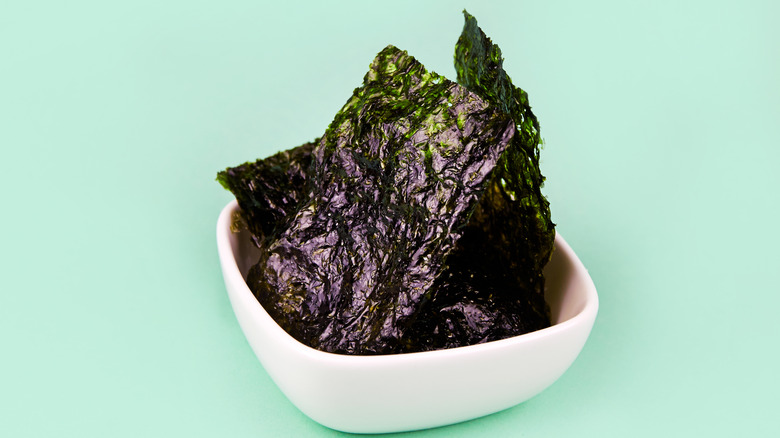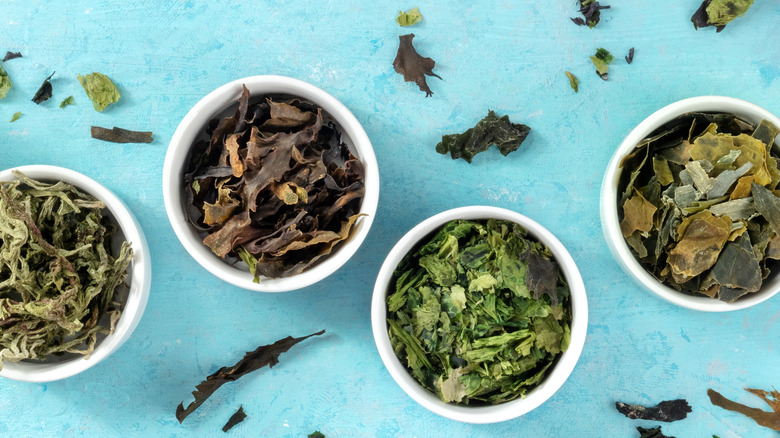Why The Seaweed Snack Market Is Booming
Nori, kombu, wakame, dulse, agar — whatever the variety, seaweed has become commonplace in our snacking repertoire. In fact, P&S Intelligence states that the worldwide seaweed market is currently worth over $500 million and is expected to reach close to $1.4 billion by 2030. But what exactly is driving the seaweed craze?
Seaweed's texture can vary depending on whether it's fresh or dried, but regardless of how it's processed, it tends to have a slightly salty and savory umami taste with a hint of mineral and seems to be unlike any other snack on the market. They range in color and size, edible seaweed grows in saltwater areas, with most coming from China and Indonesia, according to the European Journal of Phycology.
Available as sheets, chips or used inside different products, there are several brands in the snackable seaweed revolution, including SeaSnax, Ocean's Halo, Annie Chun's, and gimMe Health Foods that are leading the seaweed snack revolution.
Consumer interest for Japanese cuisine has piqued
While seaweed is used in cosmetics and medicines, a recent report states that in 2021, over 80% of the total revenue of seaweed came from the food industry thanks to an interest in Japanese cuisine and the demand for seaweed snacks.
Although seaweed has always been a huge part of Asian cuisine (especially in Japan), the novelty has led to adoration among Westerners, following media exposure. Marketed as a superfood, Healthline explains that seaweed is a significant source of vitamins like K and B12 and is also incredibly rich in minerals like iodine which can support thyroid function.
Aside from its high nutritional content and uniqueness, Expert Market Research suggests that an interest in seaweed snacks can also be linked to the convenience and accessibility for the working middle-class population in need of an energy boost.
Couple these reasons with sustainability and it's no wonder consumers love to snack on seaweed. Given that seaweed doesn't require additional land or resources, the kelp farming industry is also satisfying consumer cravings for sustainable snacking.

